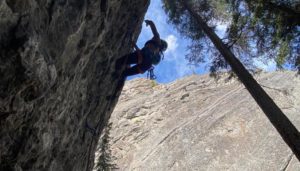Winter 2020 in Canada: Big Snow and More Ice Thanks to La Niña
There will be more avlanche hazard this winter, so be prepared if you go into the backcountry

A La Niña climate pattern has arrived and is predicted to last through the winter, according to NOAA’s Climate Prediction Center. NOAA issued a La Niña Advisory. The last winters La Niña was present in Canada was 2016/17 and 2017/18.
What is La Niña? It’s a natural ocean-atmospheric phenomenon marked by cooler-than-average sea surface temperatures in the central Pacific Ocean near the equator, the opposite of El Nino. Upwelling brings the cold water deep from the ocean to the surface and it drops the temps.
It’s here! Today NOAA declared that #LaNina conditions are now present. Read more at @NWSCPC: https://t.co/1SoztfCqpc pic.twitter.com/XuYf0npd6Q
— National Weather Service (@NWS) September 10, 2020
La Niña brings above-average precipitation and colder-than-average temperatures throughout Canada.
The forecast is good news for powder hounds and ice climbers. Early snow will bring good skiing conditions to Western Canada that will last until late spring. As waves of Arctic air focus on the prairies, rounds of storms will deliver plenty of snow to the Canadian Rockies. Compared to last winter, the upcoming one is expected to be colder and wetter from the eastern prairies to Quebec.
The result will be more ice to climb from coast to coast to coast. The downside is that there will be more avalanche hazard. Being prepared for avalanche season can save your life. Read Ice Climbing for Beginners: Avalanche Beacons and Recco Tech.
If you’re a skier and heading into the backcoutnry this year, 100 per cent carry avalanche gear. You should be practicing search and rescues in advance so you know how to use the gear. Take a course if you’re new to backcountry. Visit Avalanche Canada for more info.
After one of the last epic La Niña season, Attack of La Niña was released with some of the world’s best skiers. Check it out below.


